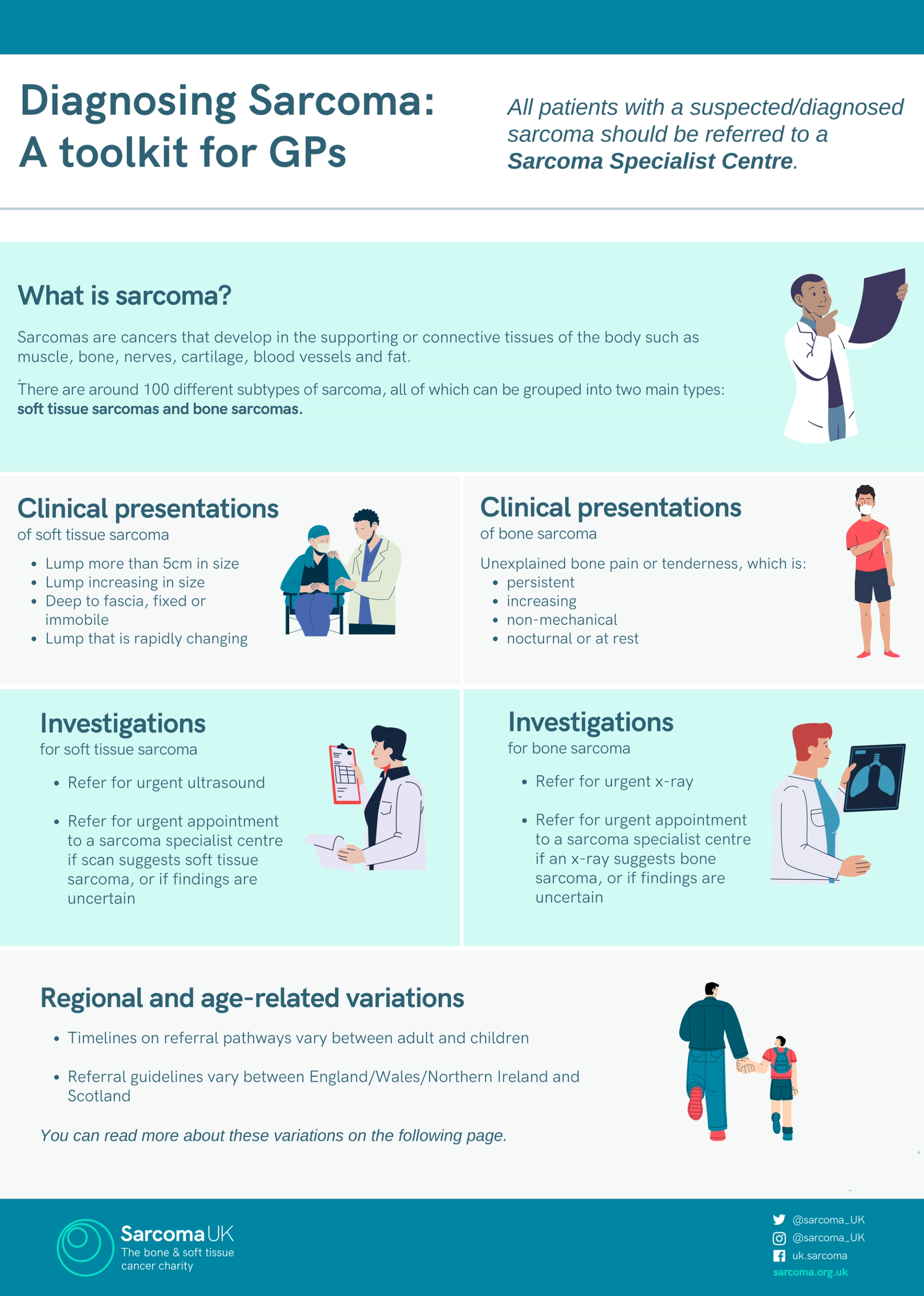Sarcoma
A sarcoma is a malignant tumour made up of a tissue derived from embryonic mesenchyme. Practically any connective tissue may yield a tumour, examples being:
- fat - liposarcoma
- cartilage - chondrosarcoma
- fibrous tissue - fibrosarcoma
- skeletal muscle - rhabdomyosarcoma
- smooth muscle - leiomyosarcoma
Sarcomatosis denotes the state of a sarcoma spreading widely throughout the body with a poor prognosis.
- are around 4,300 new soft tissue sarcoma cases in England every year, that's around 12 every day (2017-2019).
- incidence rates for soft tissue sarcoma in the UK are highest in people aged 80-84 (1996-2010).
- since 2013-2015, soft tissue sarcoma incidence rates have increased by 5% in England (2017-2019).
- most soft tissue sarcomas occur in the limbs.
- an estimated 11,700 people who had previously been diagnosed with connective and soft tissue sarcoma were alive in the UK at the end of 2010.
The most common subtypes of soft tissue sarcoma in the UK in 2008-2010 were:
- leiomyosarcoma (18%),
- fibroblastic sarcoma (14%) and
- liposarcoma (13%)
Around 4 in 10 (43%) soft tissue sarcoma cases are diagnosed in people over 65 years old. Though all of the main soft tissue sarcoma subtypes are more common in older people than younger people, the age profile varies between subtypes
Rhabdomyosarcoma in particular affects young children
Almost half (45%) of people diagnosed with soft tissue sarcoma in the UK survive their disease for ten years or more (1996-2000).
More than half (53%) of people diagnosed with soft tissue sarcoma in the UK survive their disease for five years or more (2001-2005).
Three-quarters (75%) of people diagnosed with soft tissue sarcoma in the UK survive their disease for one year or more (2005-2009).
Soft tissue sarcoma 10-year survival in the UK is similar in men and women (1996-2000).
Soft tissue sarcoma five-year survival in the UK in males is highest for those diagnosed at 35-39 years old and in females is highest for those diagnosed at 25-29 years old (2001-2005).
7 in 10 people in the UK diagnosed with soft tissue sarcoma aged 35-39 survive their disease for five years or more, compared with 3 in 10 people diagnosed aged 85+ (2001-2005).
Sarcoma diagnoses now make up about 1.3% of all cancer diagnoses in the UK (2)
seven in ten (71%) sarcomas diagnosed in the UK are soft tissue sarcomas (2)
majority of people are diagnosed when their sarcoma is about the size of a large tin of baked beans (10cm) (2)
Survival Rates (2)
- sarcoma survival rates have been very gradually increasing over the last two decades in the UK
- almost eight in 10 people (78%) diagnosed with sarcoma in the UK will live up to a year
- average percentage of people living three years after being diagnosed with sarcoma in the UK is 64.5%
- five-year survival rate for sarcoma is 55%

Reference:
Related pages
Create an account to add page annotations
Annotations allow you to add information to this page that would be handy to have on hand during a consultation. E.g. a website or number. This information will always show when you visit this page.